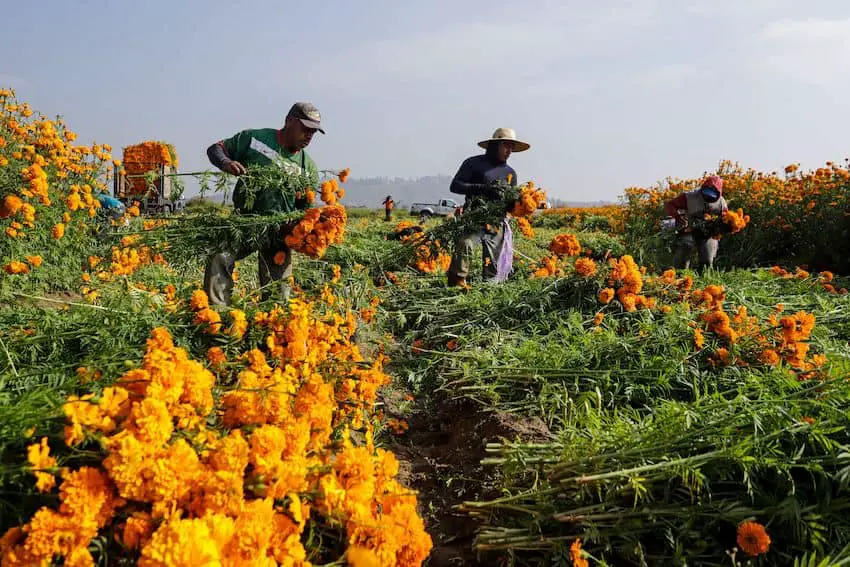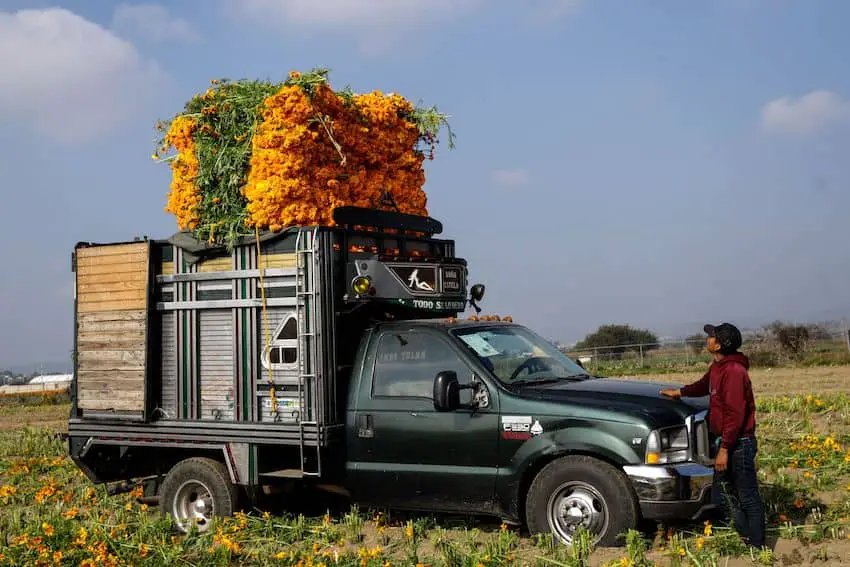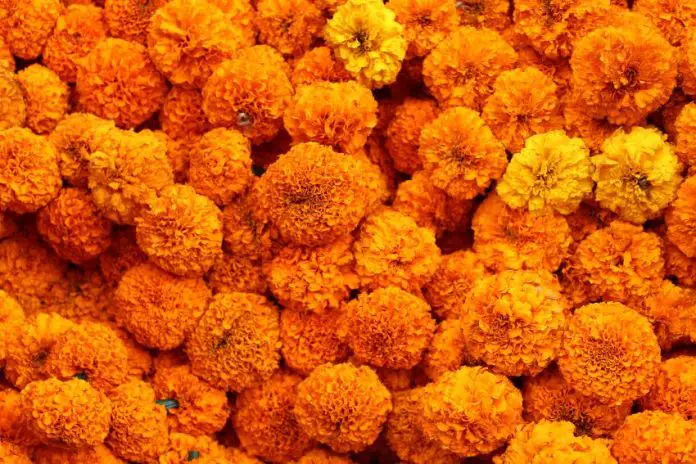You can tell Día de los Muertos (Day of the Dead) is near when a surge of orange flowers paints the streets of Mexican cities with golden hues.
The marigold flower (tagetes erecta), known in Mexico as “cempasúchil”, is a staple of one of the country’s most important holidays and an essential element in its altars for the dead. Here are five things you should know about this iconic Mexican flower.

When is cempasúchil harvested in Mexico?
Planting begins in June and July, and the harvest starts between October and November. The cempasúchil flower is native to Mexico and has been harvested since pre-Columbian times: its Spanish name comes from the Náhuatl word “cempoalxochitl,” or “twenty-petal flower.”
Which states produce the flower?
According to the Agriculture and Rural Development Ministry (SADER), Puebla, Tlaxcala, Hidalgo, San Luis Potosí, Guerrero, Oaxaca, Morelos, Durango, Sonora and Mexico City are the main cempasúchil producers in the country. In 2021, more than 19,400 tonnes of cempasúchil were harvested nationwide.
However, Puebla takes the crown as the largest producer of cempasúchil: growers in the central state planted 1,557 hectares of the flower in 2021. The entire country, for comparison, saw 2,027 hectares planted in the same year.

Where is the best place to see cempasúchil fields?
At the foot of the volcano Popocatépetl, the Puebla towns of Atlixco and Cholula — both Magic Towns — offer the best views of cempasúchil fields. Visitors to these fields can walk amidst large plantations of flowers while learning the history and legends behind them.
Why is the flower important for Day of the Dead rituals?
The cempasúchil flower helps the souls of the dead find their way to the land of the living. Its use in the holiday is believed to stem from a pre-Columbian story of two lovers, Xóchitl and Huitzilin.
According to the tale, after Huitzilin died in battle, Xóchitl prayed to the sun god Tonatiuh to reunite them on Earth. Tonatiuh granted her wish by transforming her into a bright golden flower. The god also turned Huitzilin into a hummingbird. As hummingbird Huitzilin approached cempasúchil Xóchitl with his beak, her twenty petals bloomed, filling the air with their potent fragrance.
Since pre-colonial times, the cempasúchil has been a symbol of life and death and people use it to decorate altars, offerings, and burials to honor their deceased loved ones.
Will the flowers be more expensive this year?
Yes: according to a local producer in Taxco, Guerrero, one pot of eight to 12 flowers will cost 22 pesos (US $1.23), two pesos more than last year. This is due to the higher cost of fertilizer and agrochemicals, the producer told the newspaper La Jornada.

In regions affected by drought, like San Luis Potosí and Hidalgo, cempasúchil could be more expensive because the local populations won’t be able to buy the flowers from in-state growers.
In an interview for news outlet Telediario, Isaías Ramírez, culture director of Jaltocán, Hidalgo, said he found it difficult to obtain the flower for a local celebration ahead of Day of the Dead.
“I had to go to another community, and [the flower] was very expensive,” he said. “In fact, the majority of people who work in cultivating and harvesting cempasúchil told me that much of the harvest was lost because of drought.”
With reports from Remezcla, Gobierno de México, El Universal Puebla, TV Azteca, La Jornada, Telediario, Quadrantin and El Economista
